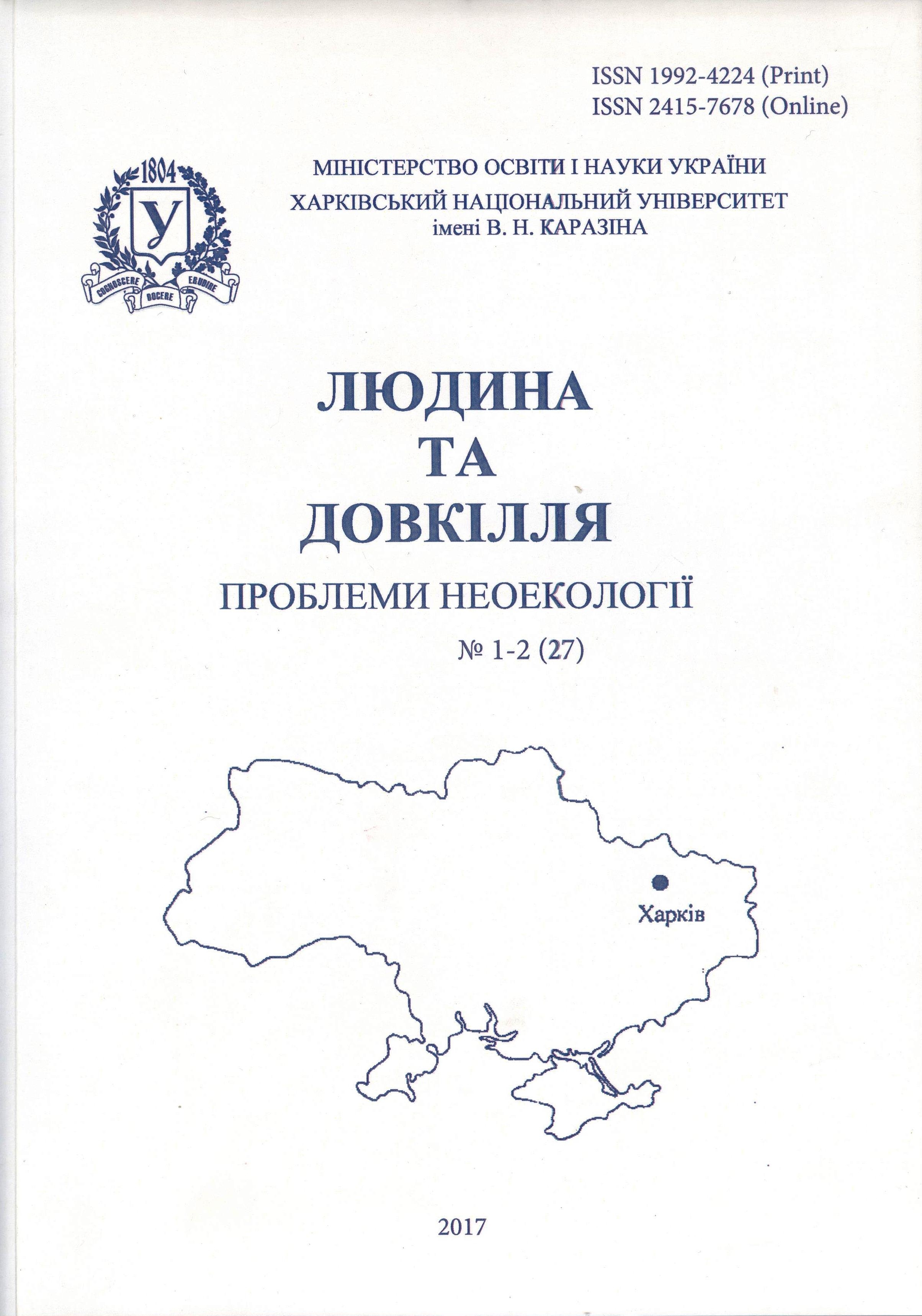Mineralization of Drinking Water as Indicator of Water Quality and Factor of the Influence to the Human Health
Abstract
Purpose. The hygienic aspect of drinking water safety and quality can be defined by the indices of epidemic safety, sanitary, chemical and radiation indices, as well as the optimal content of mineral substances, i.e. a mineral composition adequate to the physiological need of a human body: total hardness, total alkalinity, the content of iodine, potassium, calcium, magnesium, sodium, fluorine and solid residual (mineralization) Assessment of drinking water mineralization as indicator of water quality. Possible impact of mineralization level to the health of population in urbanized territories of Ukraine. Methods. Assessment of drinking water mineralization level is based on water supply organizations providing the investigations in the different urbanized territories of Ukraine. Results. The estimation of drinking water mineralization from surface and underground sources for water supply of local urbanized territories of Ukraine had been done. Also the analysis of water quality indicator in this content and possible influence on human health had been presented. Conclusions. Fluctuations of mineralization and indicators of the physiological usefulness of the mineral composition compared with the range of optimum had been marked as a distinguishing. After clearing underground waters in pumped-out complexes, their mineralization is usually reduced to an optimal value, but also significantly reduces the concentration of calcium, magnesium and other essential elements. Numerous literary indications indicate a connection between the level of mineralization (composition) of drinking water and the state of health of the population. There is a correlation between the level of mineralization (balance of mineral composition) of drinking water and human health. Long-term consumption of drinking water with an imbalance of essential mineral components can be one of the negative impacts on public health.
Downloads
References
Derzhavnі sanіtarnі normy ta pravyla «Hіhіienіchnі vymohy do vody pytnoi, pryznachenoi dlia spozhyvannia liudynoiu» (DsanPіN 2.2.4-171-10). [State sanitary norms and rules "Hygienic requirements for drinking water intended for human consumption" (DsanPiN 2.2.4-171-10).]. 2010. Kyiv: MOZ Ukrainy [in Ukrainian]
DSTU 7525:2014. «Voda pytna. Vymohy ta metody kontroliuvannia yakostі». [DSTU 7525: 2014. "Drinking water. Requirements and methods of quality control"]. 2014. Kyiv: Mіnekonomrozvytku Ukrainy. [in Ukrainian]
Rudko, H., Adamenko, O. (2010). Vstup do medychnoi heolohіi. [Introduction to medical geology.] Kyiv: Akadempres. [in Ukrainian]
Filatov, D. Obsuzhdenie optimal`nogo mineral`nogo sostava pit`evoj vody`.[ Discussion of the optimal mineral composition of drinking water]. https://geektimes.ru/post/295801. 25.11.2017 Web. 20.1.2018 Re-trieved from: https://geektimes.ru/post/295801 [in Russian].
Shtannikov, E., Sumovskaya , A., & Ob``edkova , G. (1985). Izuchenie e`mbriotoksicheskogo i teratogen-nogo dejstviya vody` povy`shennoj mineralizacii.[ Study of embryotoxic and teratogenic action of high salinity water]. Gigiena i sanitariya, 9, 19-20 [in Russian].
Akulov, K., Bushtueva, K., & Goncharuk, E. (1986). Kommunal`naya gigiena . M: Medicina.608 [in Russian].
Mokіienko, A. (2015). Mіneralnyi sklad pytnykh ta mіneralnykh vod yak faktor vplyvu na zdorov'ia naselennia (ohliad lіteratury). [Mineral composition of drinking and mineral waters as a factor of influence on public health (literature review)] Voda: Hyhyena y Эkolohyia, 1-2, 173-201 [in Ukrainian]
Yakovliev, V. (2017). Perspektyvnі dzherela pryrodnykh vod dlia pytnoho vodopostachannia Ukrainy, yikh okhorona і ratsіonalne vykorystannia .[ Promising sources of natural waters for drinking water supply in Ukraine, their protection and rational use]. (Doctoral dissertation). Kharkіv. nats. un-t іm. V.N. Karazіna, Kharkіv, 351 [in Ukrainian]
Valyashko, M. (1962). Zakonomernosti formirovaniya mestorozhdeniya solej.[ Regularities of salt deposit formation] . Moskow: Izdatel`stvo MGU, 214 [in Russian].
Shestopalov , V., Negoda, G., & Ovchinnikova , N. (2003). Klassifikaciya mineral`ny`x vod Ukrainy`: monografiya.[ Classification of mineral waters of Ukraine: monograph.] Kiev: Makkom,121 [in Russian].
Belousova, A. (2007). E`kologicheskaya gidrogeologiya. [Ecological hydrogeology]. Moskva: IKCz «Akademkniga»,397 [in Russian].
Safranov , T., Polіshchuk , A., Yurchenko , V., & Yaryshkіna , L. (2016). Otsіnka optymalnoho mіneral-noho skladu pytnykh vod system tsentralіzovanoho vodopostachannia okremykh mіskykh ahlomeratsіi Ukrainy. [Estimation of optimal mineral composition of drinking water of centralized water supply systems of some urban agglomerations of Ukraine]. Man and Environment. Issues of Neoecology. 3-4(26), 51-61. [in Ukrainian]
Safranov, T., Husieva, K. (2016). Balanced Mineral Composition of Drinking Water as an Influence on the Public Health at the Urban Agglomerations of the Northwestern Black Sea Region. Water Security: Monograph. Mykolaiv: PMBSNU – Bristol: UWE, 192 – 207 [in English].
Safranov, T., Hrabko, N., Polіshchuk, A., & Trokhymenko, H. (2016). Zbalansovanіst mіneralnoho skladu pytnykh vod yak chynnyk vplyvu na zdorov'ia naselennia mіskykh ahlomeratsіi Pіvnіchno-Zakhіdnoho Prychornomor'ia.[ Balance of the mineral composition of drinking water as a factor affecting the health of urban agglomerations of the North-West Black Sea]. Vіsnyk Odeskoho derzhavnoho ekolohіchnoho unіversytetu, 20, 5-8 [in Ukrainian]
Strelecz, B. (1987). Spravochnik po vodny`m resursam . [Handbook on water resources]. Kiev: Urozhaj, 302 [in Russian].
Matsіievska , O. (2015). Otsіniuvannia yakostі pytnoi vody m. Lvіv ta doslіdzhennia vplyvu vody rіznoi yakostі na pokaznyky krovі liudyny. Medyko-hіdroheokhіmіchnі chynnyky heolohіchnoho seredovyshcha Ukrainy: monohrafіia , Розділ 12, 495-535 [in Ukrainian].
Authors reserve the right of attribution for the submitted manuscript, while transferring to the Journal the right to publish the article under the Creative Commons Attribution License 4.0 International (CC BY 4.0). This license allows free distribution of the published work under the condition of proper attribution of the original authors and the initial publication source (i.e. the Journal)
Authors have the right to enter into separate agreements for additional non-exclusive distribution of the work in the form it was published in the Journal (such as publishing the article on the institutional website or as a part of a monograph), provided the original publication in this Journal is properly referenced
The Journal allows and encourages online publication of the manuscripts (such as on personal web pages), even when such a manuscript is still under editorial consideration, since it allows for a productive scientific discussion and better citation dynamics (see The Effect of Open Access).





